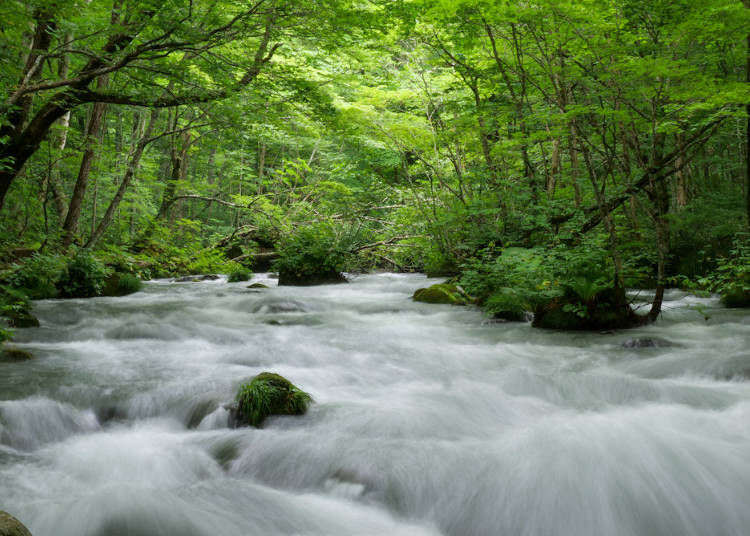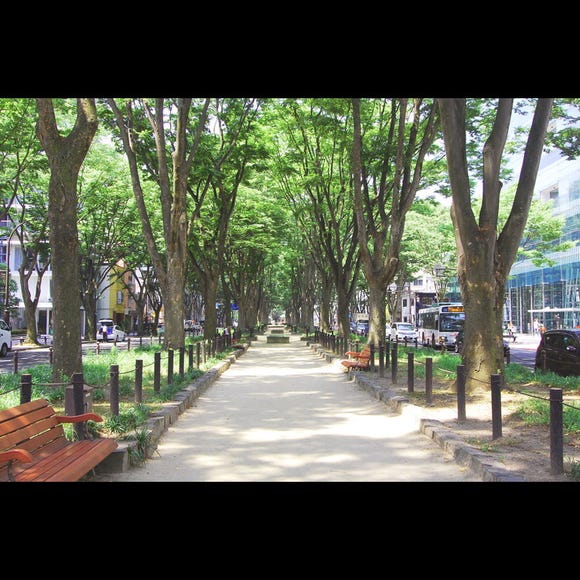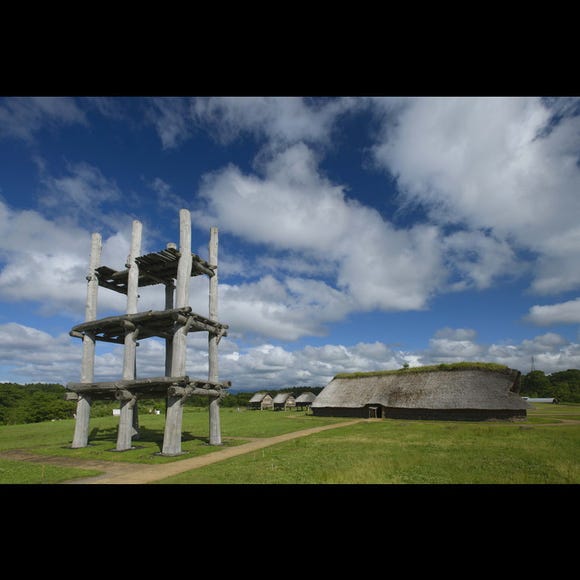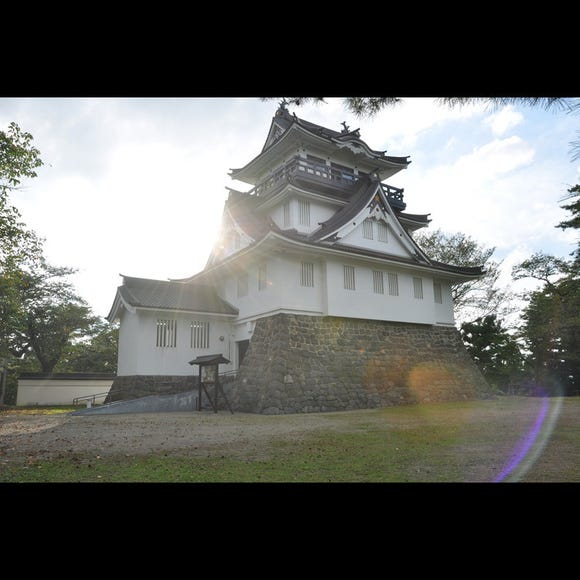
Located in Towada City, Oirase Gorge is widely recognized as a must-visit destination in Aomori Prefecture. Nestled within lush natural forests, this enchanting gorge offers convenient access, with a dedicated sightseeing route that can be explored by car, making it perfect for casual visitors.
In this guide, we will share about the wonders of Oirase Gorge and provide valuable tips for first-time visitors, ensuring an unforgettable experience.
(Main image provided by General Incorporated Association Lake Towada National Park Association)
About Oirase Gorge

Oirase Gorge is a designated natural monument and natural special scenic spot, and is one of the most well-known scenic spots in Japan. With a 14-kilometer long path surrounded by nature and untouched by mankind, from the huge waterfalls to the beautiful streams flowing, there are numerous breath-taking spots there.
Getting to Oirase Gorge
To reach Oirase Gorge, there are two main transportation options:
・Option 1: Renting a car from Aomori Airport
Rent a car from Aomori Station, which will take around an hour and 15 minutes to reach Oirase Gorge.
・Option 2: Taking public transportation
If you prefer to travel by bus, from Aomori Station, take a JR Bus that directly heads to Oirase Gorge. Make sure to get off at the designated stop called "Oirase Field Museum (Oirase Keiryū-kan)."
Notably, the JR Bus departs from both Shin-Aomori Station and Hachinohe Station, both of which connect to the Shinkansen bullet train. This convenient public transportation option ensures that Oirase Gorge, despite being a natural treasure spot, is easily accessible to foreign visitors without much difficulty.
Special Discount(Nippon Rent-A-Car)
Get 10% off when you book via the special site. (Coupon code: iUzM2RfVlJ)
Oirase Gorge bus schedule
The JR Bus Tohoku offers convenient bus transportation between JR Bus Towadako Station, Hachinohe Station, and Aomori Station.
Please note that both the JR EAST PASS and The JAPAN RAIL PASS are valid for the local line of JR Bus Tohoku. It's important to be aware that the buses can accommodate around 50 passengers and may become crowded during peak seasons. As the buses do not have onboard toilets, it is advisable to plan accordingly and make necessary restroom arrangements before boarding.
Sample itinerary:
・Depart Aomori Station at 8:10 AM; arrive at the Oirase Field Museum stop at 10:07 AM.
・Walk or cycle from Oirase Field Museum stop to the Nenokuchi bus stop (around 3 hours)
・Take the 3:15 PM bus at the Nenokuchi stop back to Aomori Station (arriving at 4:38 PM)
When is the peak season for visiting Oirase Gorge?

The peak tourist season is summer, when the forests are covered in luscious green.
However, there are also the vibrant red hues of autumn foliage, and the waterfall, which freezes into a “hyōbaku”, or icefall, in winter, allowing you to see different natural sceneries all year round, leaving you wanting to visit again and again.


Main courses around Oirase Gorge
The picturesque walking path of Oirase Gorge stretches for 14 kilometers, beginning from Ne-no-Kuchi along the lakeside of Lake Towada and leading up to Yakeyama Mountain.
The beauty of Oirase Gorge is that it offers accessibility not only to pedestrians but also to cars. The sightseeing path is designed to accommodate vehicles, featuring several bus stops at various renowned attractions.
Additionally, for those seeking a more active experience, rental bicycles are available, allowing you to choose the most suitable route and mode of transportation based on your preferences and physical fitness.
Exploring the fascinating points of interest and scenic spots is a breeze as they are easily accessible from the main road. The straightforward layout of the road ensures that you won't lose your way, making navigation along the route hassle-free.
(1) Rental bicycle

The walk from Nenokuchi to Oirase Field Museum (Oirase Keiryū-kan) will take between three and four hours. If you intend to walk the entire course, plan ahead and check the bus schedules so that you can time your pace.
Buses come relatively infrequently, and you can expect the last bus bound for Hachinohe Station to depart at 4:15 PM from Nenokuchi or 4:42 PM at the Oirase Field Museum (Oirase Keiryū-kan) stop.*
While adventurous individuals in good condition may choose to embrace the challenge of walking the entire route, it is recommended that first-time visitors opt for a more leisurely experience by embarking on a two-hour bicycle journey. This allows for an enjoyable exploration without pushing one's limits too far.
For the convenience of visitors, various tourist information centers and rest areas in the vicinity offer electric bicycles for rent. These bikes provide the perfect balance of assistance, enabling you to traverse the route comfortably and at an appropriate level of exertion.
One notable advantage is the flexibility to return the rental bicycles to a different reception point from where they were obtained. This eliminates the need to transport the bikes all the way back to the original rental station, making the return process hassle-free and convenient.
(*Schedule for April 13, 2024 - August 31, 2024. See details at https://www.jrbustohoku.co.jp/towadako-oirase/en/.)
(2) Car or bus

Conveniently, there are several temporary parking spaces available along the walking route, allowing visitors to easily access different areas by car. Whether you choose to explore by car or opt for bus transportation or walking, it's important to note that bus schedules are limited. Therefore, it is advisable to thoroughly check the timetables for the buses at your desired destinations before relying on them for transportation.
What to wear & how to prepare for hiking Oirase Gorge

When hiking in summer, it is advisable to wear long-sleeved shirts and pants, along with comfortable shoes that can withstand getting wet. The terrain in Oirase Gorge is mostly flat, so there is no need to prepare as if you were embarking on a mountain climb. However, it is recommended to bring insect repellent and consider carrying bear spray as a precautionary measure.
Given the substantial amount of energy expended during hiking, it is essential to pack a towel, a hat, and an ample water supply. Additionally, it is important to note that the temperature difference in the gorge can be significantly greater than in urban areas. Therefore, in addition to suitable clothing for the high summer heat, it is also advisable to bring along some warm clothing to ensure comfort throughout the day.
Highlights along Oirase Gorge: Ashura Stream and the Choshio Falls

Once you have completed your preparations, you can start your journey towards Oirase Keiryū. To begin, take a bus to the entrance of Oirase Gorge, known as Oirase Field Museum (Oirase Keiryū-kan), located in Yakeyama. Alternatively, if you have rented a car, there is a spacious parking lot available for your convenience.
For our adventure, we opted to explore the area by rental bicycles. We obtained our bicycles from the reception and set off on our exploration.
By the way, at this facility, not only can you gather information about the scenic spots and history of Oirase Keiryū, but you can also find a selection of light snacks for sale. We highly recommend grabbing some water and sweet snacks before embarking on your journey.

Though it was the hottest in August when we visited, Oirase Gorge is a popular place for escaping the heat. Its cool climate and beautiful sights to enjoy are one of its main draws. Besides this, the breeze as you ride your bicycle is pleasant, and riding along the path while surrounded by nature heals your soul.

(1) Samidare Stream
As we headed to Ne-no-Kuchi, we arrived at our first view spot, the Samidare Stream. As a plaque was erected at the side of the Oirase Stream, we stopped our bikes so as not to obstruct traffic flow, and once we headed to the walking path, we were immediately greeted by an amazing sight.

The Samidare Stream got its name from how it splits into three from a single stream, and is one of the main streams of Oirase Keiryū. The beauty and force of the remerging of the three streams can only be described by the roar of the stream, accentuating this work of art that nature has created. Though it’s also beautiful in summer and autumn, the azaleas blooming along the rocks in May makes for a different scene.
(2) Ishikedo

As we headed off from Samidare Stream and continued towards Ne-no-Kuchi, we almost immediately caught sight of the Ishikedo rest stop. It’s connected to the walking path, and after a short walk from it, a large stone object emerges. “Ishikedo” is a local dialect for “small stone house”. It’s said to be home of a beautiful thief named Kijin-no-Omatsu, who, according to legend, kills travelers and steals their money.

In stark contrast to such a fearsome legend, the walking path here is beautiful, and calm and removed from the flowing stream. Though Oirase Keiryū largely follows the flow of the streams, this area has some beautiful scenery, and is recommended for those who would like to take a short walk too.

Besides this, do watch where you stop when on the walking path. Oirase Keiryū has over 300 varieties of moss growing, with trees both standing and fallen, rocks, and signboards covered in green. The intricate designs and textures of the moss form over long periods of time, and are a mystery of the plants. It’s a valuable scene unique to the humid and moist environment of Oirase Keiryū.

(3) Ashura Stream
For those who like to observe moss while enjoying their walk, this time, we’ll be introducing you to the most famous viewpoint in Oirase Gorge. The Ashura Stream is a famous place that has appeared in numerous television commercials and posters, and numerous visitors come touting cameras.

Named after the god of war, Ashura, the raging flow of the stream between the rocks and trees, is a testament to its strength and magnificence. But more than that, the continuous flow of the stream and the greenery of the plants is simply gorgeous, enveloping the area in a mysterious atmosphere.
Besides the Ashura Stream, this area has one more hidden scenic spot that you can’t miss out. Like the Chisuji-no-Taki Waterfall, which translates to “thousand thread waterfall”, which has a beautiful and intricate flow like thousands of threads, the Kamoi-no-Taki Waterfall, which translates to “cloud well waterfall”, its 20-meter tall dynamic flow is popular. In the same space, you can experience the marriage of calm and quiet of nature with movement, one of the charms of Oirase Gorge.


As we headed along the driving road from Kamoi-no-Taki Waterfall, we reached our destination, the Ne-no-Kuchi area. As this place has many waterfalls and streams, it’s recommended to get off from your cars and bicycles and stroll around. Along the way, you’ll see many collaborations with nature, such as wooden tables and chairs, allowing you to take rest stops while enjoying the scenery.


(4) Choshi Otaki Waterfall
The biggest view point in this area is the Chōshi-Ōtaki Waterfall, standing at a proud twenty meters wide and seven meters tall. The only waterfall to originate from the main stream of Oirase Keiryū, it is said to have gotten its name from being like a bottle mouth to the Lake Towada, if it is thought of as a sake bottle.


Because of the waterfall, fish are unable to swim upstream, and as such, due to Chōshi-Ōtaki Waterfall, Lake Towada does not have fish that live for many years living in it. You can feel the massive scale of the falls up close, and heal yourself with the abundance of negative ions.

After passing Choshi-Otaki Waterfall, it’s just a little more till we reach our goal, Ne-no-Kuchi. After returning our rental bicycles at the JR Bus “Ne-no-Kuchi” station, our journey through the streams is completed. To see all the spots and walk around them actually took over two hours, but we enjoyed our exploration without getting overly exhausted.

Oirase Gorge, a breathtaking sightseeing destination, showcases the vast expanse of untouched nature, undisturbed by human hands.
We hope that this guide has provided you with insights into the enchanting attractions of Aomori Prefecture. Moreover, apart from the places highlighted in this article, there are numerous other captivating locations worth exploring. Take your time and immerse yourself in the tranquil ambiance of this expansive natural paradise.
-
Oirase Gorge (Oirase Field Museum)奥入瀬渓流(奥入瀬渓流館)
- Address Tochikubo 183, Okuse, Towada Shi, Aomori, 034-0301
-
Nearest Station
From JR Aomori Station, take the JR bus and get off at "Oirase Field Museum"
- Phone Number 0176-74-1233
・Hours: 9:00 AM to 4:30 PM
・Closed days: Irregular holidays throughout the year
-

-
Address
Okuse, Towada-shi, Aomori, 034-0301
View Map -
Nearest Station
Hachinohe Station (Hachinohe Line / Tohoku Shinkansen / Hokkaido Shinkansen / Aoimori Tetsudo)
90 minutes by bus
- Phone Number 0176-75-2425
-
Address
Okuse, Towada-shi, Aomori, 034-0301
Text by: Tsubasa Shimoda
Information in this article accurate as of September 2020.
Recommended Hotels near Oirase Gorge
-

-
Address
Horyo Yakeyama 64-263, Towada, Aomori, 034-0303
View Map -
Nearest Station
Shichinohe-towada Station (Tohoku Shinkansen / Hokkaido Shinkansen)
Vacancy search, reservation
-
Please enquire directly about rates.
Check with our partner site as the latest rates, rate details, and guest room requirements may vary.
-
Address
Horyo Yakeyama 64-263, Towada, Aomori, 034-0303
-

-
Address
Yakeyama 64-281 Horyo, Towada, Aomori, 034-0303
View Map -
Nearest Station
Shichinohe-towada Station (Tohoku Shinkansen / Hokkaido Shinkansen)
Vacancy search, reservation
-
Please enquire directly about rates.
Check with our partner site as the latest rates, rate details, and guest room requirements may vary.
-
Address
Yakeyama 64-281 Horyo, Towada, Aomori, 034-0303
- Area
- Category
*Prices and options mentioned are subject to change.
*Unless stated otherwise, all prices include tax.
Popular Tours & Activitiess
Recommended places for you
-

Aomori Museum of Art
Art Museums
Aomori, Hirosaki And Hachinohe
-

Jozenji Street
Other Townscapes
Sendai And Matsushima
-

Ishiguro Samurai House
Historical Places
Surrounding Areas Of Akita
-

Sannai-Maruyama Site
Village Ruins
Aomori, Hirosaki And Hachinohe
-

Yokote Park
Parks
Surrounding Areas Of Akita
-

Aquamarine Fukushima
Zoos, Aquariums & Botanical Gardens
Fukushima, Koriyama And Iwaki
-

Aomori's Quiet Side in Autumn: 5 Scenic Spots in Hachinohe According to a Local
by: Marco Blasco
-

What to Buy in Aomori? 11 Aomori Souvenirs Locals Actually Recommend
by: ShiroKu inc.
-

Niigata Sake no Jin 2026: Guide to Japan's Most Legendary Sake Weekend
-
Ad

Just one stop from Haneda Airport! "Truly Japanese!" Food, Fun, and Knowledge Gather at HICityⓇ Enjoy An Electrifying Night at "Japan Night Fever: Haneda Innovation City"
by: Yohei Kato
-

Shopping in Akita: 11 Must-Buy Souvenirs & Where to Shop Near the Station and Airport
by: ShiroKu inc.
-

Shopping in Niigata: 9 Must-Buy Souvenirs & Local Sake to Take Home
by: ShiroKu inc.
-

Dakigaeri Gorge: Stroll Beside Aqua-Blue Streams and Brilliant Autumn Leaves in Akita
by: Guest Contributor
-

Complete Guide to Buying Japanese Medicine in Japan: Phrases and Vocabulary You Need to Know
-

Oga Aquarium GAO Guide: Fish, Polar Bears and...Godzilla?
-

Enjoy the Untouched Beauty of Oirase Keiryu (Aomori): Japan's Hidden Nature Gem
by: Miyu Shimada
-

Day Trip to Lake Towada - Japan's Gorgeous Northern 'Power Spot' Destination
-

Yamagata Prefecture Guide: Destinations, Activities, Travel Advice, Shopping & More
by: Steve Csorgo













